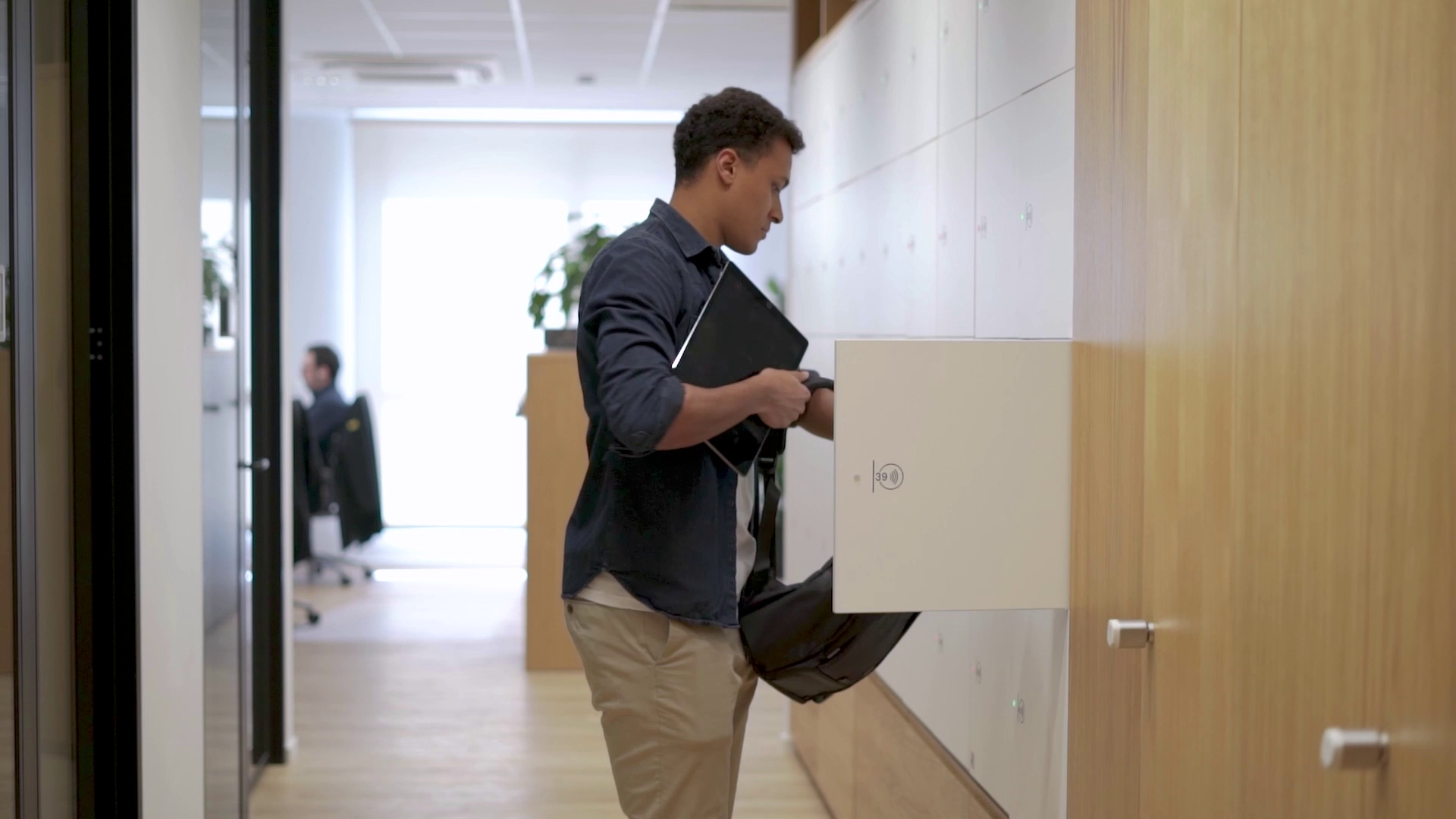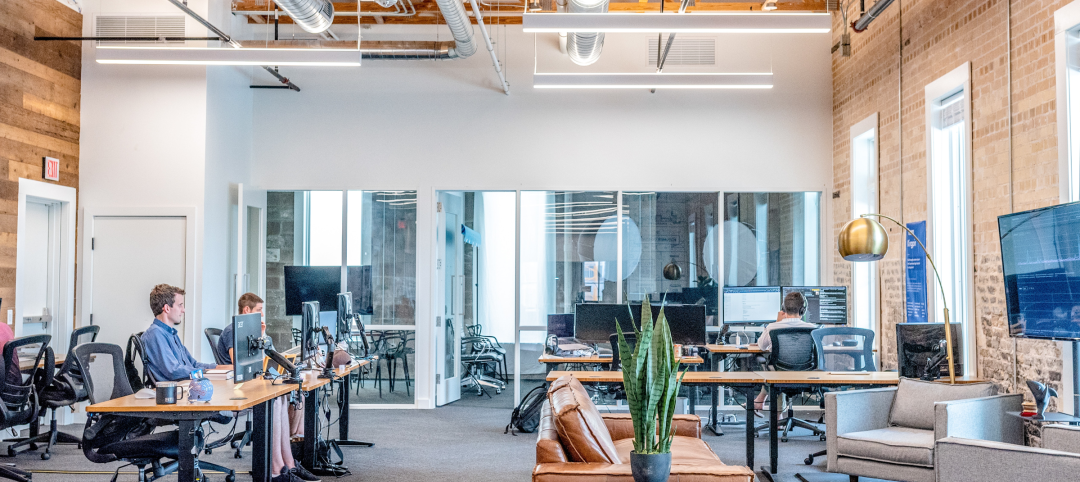The Evolution of the Modern Workspace
Over the last decade, the modern workspace has undergone a series of transformations, each shaped by technological advancements, economic shifts, and societal changes. From the rise of the open-plan office to the digital revolution that untethered work from a specific location, these evolutions have impacted how, where, and when we work. However, none of these shifts have been as rapid or as profound as those triggered by the Covid-19 pandemic.
Practically overnight, organizations and employees worldwide found themselves grappling with remote work, not by choice but by necessity. This shift laid bare the limitations of traditional work models and paved the way for new, more flexible work arrangements, setting the stage for the widespread adoption of hybrid work and the rise of the corporate smart office.
Today, as the CRE industry struggles to redefine itself and set a course for the next decade, businesses small and large are devising strategies to entice employees to come back to the office—at least some of the time. For the more progressive companies, their focus has shifted towards designing spaces that offer flexibility, foster collaboration, and promote well-being and balance. Among the myriad of amenities being integrated into these contemporary workspaces, one seemingly modest yet remarkably effective amenity stands out: lockers.
Understanding Hybrid Work
What is hybrid work? Well, it is not rocket science (unless you work at Lockheed Martin or SpaceX, then it probably is actually rocket science), the term refers to a flexible work model that supports a blend of in-office, remote, and on-the-go working. It offers employees the autonomy to determine how to work wherever and however they are most productive. In many corporate circles, “Hybrid Work” has also begun to connotate ideas of inclusiveness, engagement, and well-being for all employees or staff members.
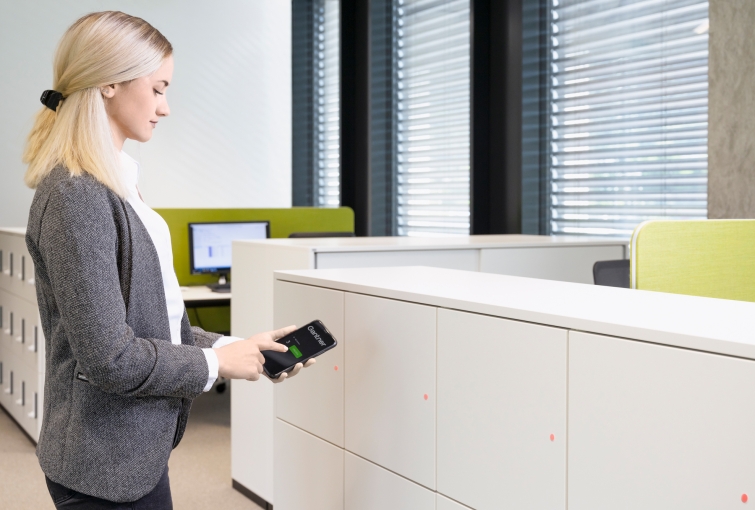
For many businesses looking to strike a happy and acceptable balance between employee demands and their real estate investments or commitments, the hybrid model has emerged as the "sweet spot" for them and their employees. This model offers the best of both worlds: the conveniences of remote work, combined with the collaboration and community opportunities offered by in-office days.
A recent McKinsey report highlights a dramatic shift from 20% of workers engaged in some form of remote work pre-pandemic to an astounding 80% post-pandemic. Another firm, Global Workplace Analytics, estimates significant cost savings for companies, suggesting that organizations can save over $11,000 per year for every employee who works remotely half the time. These benefits underscore the mutual advantages of hybrid work, positioning it as a cornerstone of the future workplace.
The Role of Workplace Amenities in Hybrid Work
In recent years, the landscape of workplace incentives has undergone a significant transformation. Employers, in their quest to create a more engaging and enjoyable work environment, have experimented with a variety of perks ranging from ping-pong tables and craft cold brews to pizza parties. While these amenities certainly add a fun element to the office, the evolving needs of today’s workforce and the shift towards hybrid work models have prompted a reevaluation of what truly constitutes meaningful incentives. Today, the focus is on providing amenities that not only enhance workplace satisfaction but also contribute to increased productivity and effectiveness.
No longer just perks, amenities are now critical components of a strategy designed to support hybrid work models and address their unique challenges. Among these, creating an environment that supports both collaboration and flexibility stands out as a primary goal for modern organizations.
In these new, modern corporate office spaces, the emphasis is shifting toward creating smart spaces that leverage technology for improved functionality. From intelligent lighting systems that adjust based on natural light to temperature regulation through IoT connected HVAC systems, these features not only contribute to energy efficiency but also foster a comfortable and productive working atmosphere.
The physical design of office space is changing as well, with the introduction of flexible workstations where workers can choose from a variety of settings – be it a quiet corner for focused work, collaborative spaces for team projects, or casual lounges for informal discussions. This flexibility is driven by the integration of advanced access control and other digital tools that allow employees to transition between different work modes seamlessly.
Lockers: The Unsung Heroes of Hybrid Workspaces
In the quest to balance the evolving needs of the modern smart office, lockers have emerged as an unlikely hero. Gone are the days when lockers were merely a utilitarian fixture relegated to the corners of gyms or schools. In today's flexible corporate workspaces, lockers have been reimagined as a cornerstone of the next generation office design, symbolizing the shift towards a more dynamic and personalized work environment.
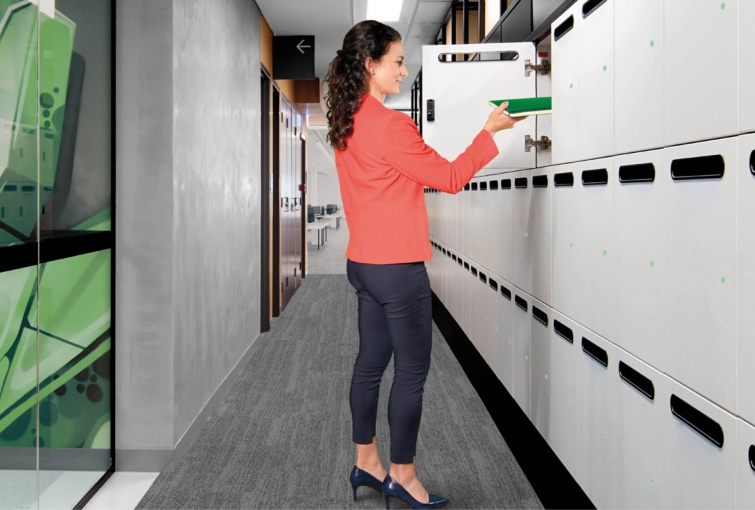
Far from their traditional image as simple storage solutions, modern lockers are designed to support the dynamic nature of hybrid work. They offer secure storage for employees who no longer have a fixed desk, facilitating hot-desking and flexible seating without the burden of carrying personal items to and from the office daily. Moreover, with features like digital locks, charging stations, and ventilation, today's lockers enhance the employee experience, marrying functionality with the sleek aesthetics of contemporary office design.
Beyond Storage: Lockers in the Hybrid Ecosystem
Today’s smart locker systems integrate with other workplace amenities to create an organized and efficient work environment. The smart locker system is typically a part of the access control system, or a workplace app. Data generated from smart lockers can be used in conjunction with other smart office systems to optimize building processes. Additionally, thoughtful placement and design of locker areas can encourage interaction and collaboration, contributing to a vibrant office culture.
Innovative locker solutions from companies like Gantner illustrate the potential of smart lockers in modern workspaces. These systems not only secure personal items but also seamlessly integrate with building management systems, enhancing both the functionality of the workplace and the satisfaction of its users. Companies that have implemented Gantner's solutions report not just an improvement in the functionality of their workspaces but also an increase in employee satisfaction and productivity, highlighting the tangible benefits of integrating smart lockers into hybrid work environments.
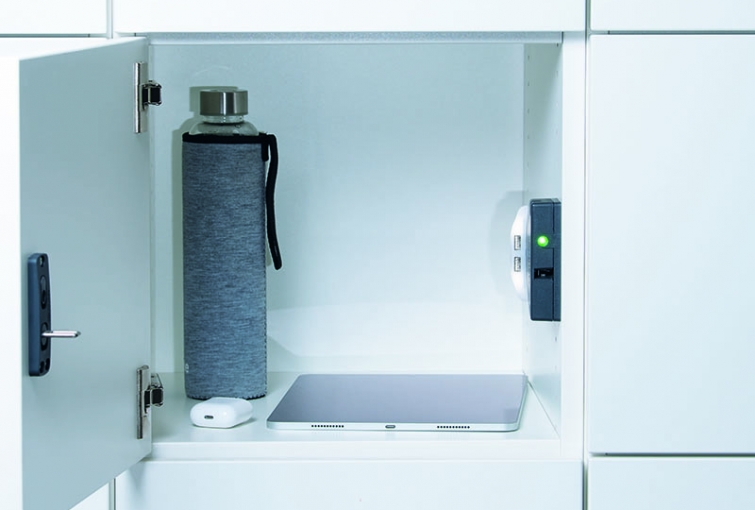
Securing the Future: Lockers as a Keystone of Hybrid Work Strategies
For many of us, lockers once held our textbooks and personal treasures, marking the rhythm of our school days, they now find a new purpose in the up-and-coming hybrid workspace movement. This transition from school to office lockers symbolizes more than just a change in setting; it reflects the evolution of our work lives towards greater flexibility and personalization. When it comes to corporate smart offices and hybrid workplaces, lockers stand as a testament to our ability to adapt and thrive amidst change, offering a bridge between the familiarity of the past and the innovation of the future.
As companies continue to refine their hybrid work strategies, the importance of adaptable, employee-centric amenities has never been clearer. Lockers, once a simple storage solution, have evolved into a key component of modern workspaces, facilitating flexibility, security, and a sense of belonging for employees navigating the hybrid work model. As we embrace these new professional environments, lockers will not only store our personal belongings but also symbolize the dynamic and flexible nature of modern work life, proving that sometimes, the most effective solutions are those that evolve with us.
More from Author
Nikki Seidman, SALTO | Jul 17, 2024
Unlocking Sustainability: Smart Access in the Coworking Space
Smart building technologies, including modern access control systems, are transforming coworking spaces by advancing sustainability initiatives and offering new ways to create and operate efficient working spaces. Learn more about the benefits of eco-friendly practices, from reducing carbon emissions to cutting operating costs, and discover how choosing the right partners can amplify your green efforts.

